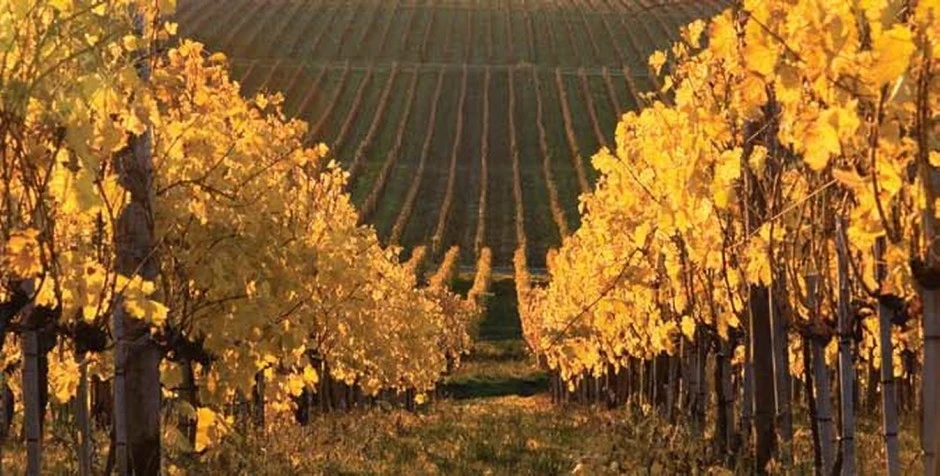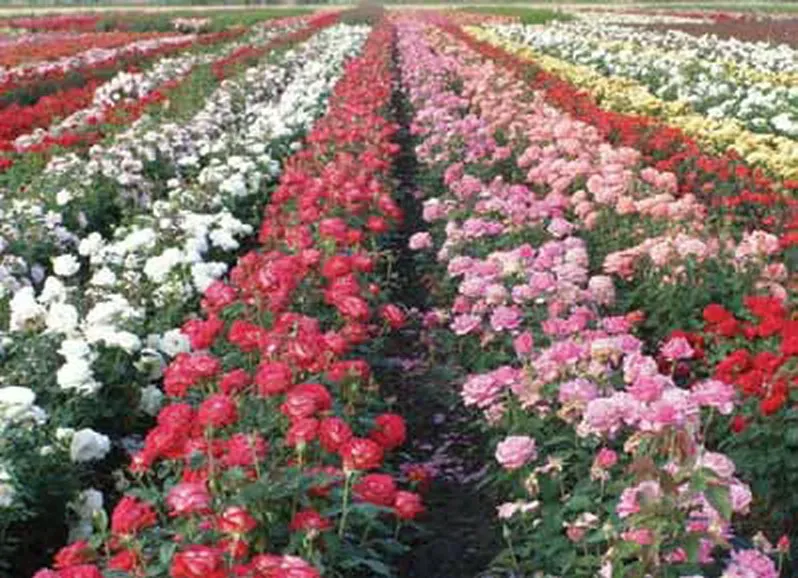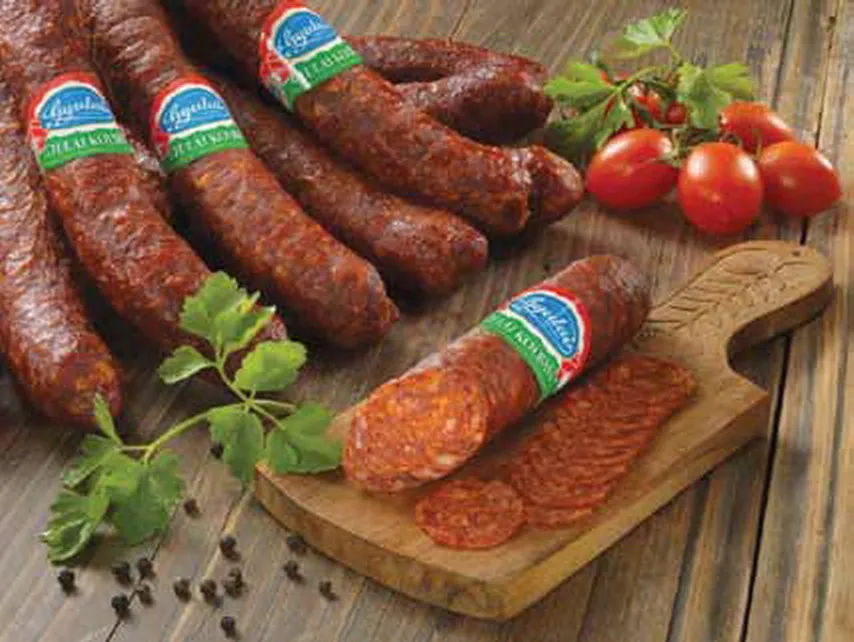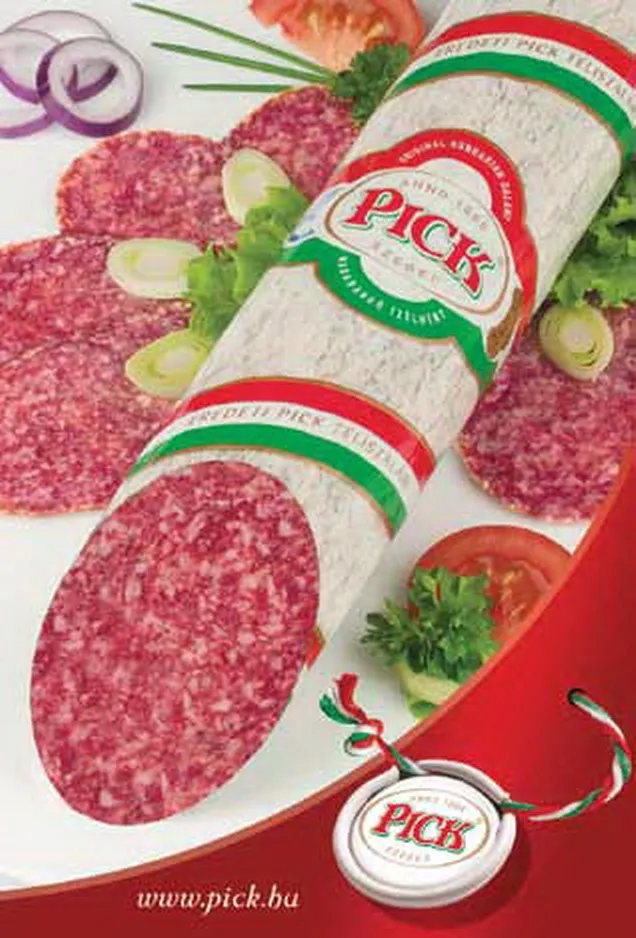
Introduction
With increasing income of the world population there is an increasing demand for quality products. The motion of quality of agro-food products is not stable. It is changing by time, by groups of people, by technological developments, by changes in the societal environment. In the view of the consumers besides the quality of the products themselves, another substantial element for their buying decisions are the connected services, like packaging, delivery, behavior (kindness) of the selling personal.
Two substantial societal impacts in recent time for the perception of quality are the worldwide COVID-19 pandemic and – especially in Europe – the new Common Agricultural Policy for the period 2023-27. In this paper the authors aim is to analyze the characteristic elements of these challenges and the reaction of the world – and especially of Hungary – to them.

Common Agricultural Policy (CAP) of the European Union
In recent time quality policy plays an increasing role within the Common Agricultural Policy. The European Commission published May 28, 2009 a Communication „on agricultural product quality policy. Before publishing the Communication the Commission had a wide consultation with producers and trade and other stakeholders. To draw the conclusions, a High level Conference on Agricultural Product Quality was held in Prague in March 2009.
In the Communication the Commission declares, that product quality has two aspects: the product characteristics (like size, taste etc.) and the farming attributes (like production method, type of animal husbandry etc.). The EU has – even in worldwide comparison - very strict legal regulations with respect to environment protection, animal welfare, use of pesticides and veterinary products, which ensure the overall high quality of EU products. Beyond this, farmers and processors are willing to undertake even more strict rules of the production and of processing, to differentiate their products from those of other producers, to attire the interest of the consumers.
EU producers of agri-food products often complain, if in a trade agreement the EU applies tariff reductions for third countries. The reasoning is, that while imported products have to meet the product specific requirements (e.g. additives), the third country producers do not have to apply the same restrictions for the production /(e.g. environmental or animal welfare regulations) The Commission encourages EU producers not to consider this difference as a burden, but rather as an opportunity, as a competitive instrument. While explaining to the consumers, how their products are meeting high expectations compared to the imported products, EU producers may gain market shares and higher premiums (Green Paper of the EU). Anyhow these kinds of „ explanations” need budgetary backing and a wide range of promotional activities (brochures, videos, tastings etc.) A good example for such tools is the Commission initiated set of recipes, using products with quality labels and the Cookbook, where renewed European chefs suggest, how unique products with GI from their country can be incorporated into dishes.
Taken into account the considerations of the European farmers, according recent information the French Presidency of the European Union Council would like to initiate talks on including into third countries trade agreement also environmental and animal welfare aspects of production processes.
The EU Regulation 1151/2012 of 21 November 2012 lays down the rules on quality schemes for agricultural and food products. This Regulation strengthens and simplifies the quality schemes, the administration of them. Based on the initial experiences EU Regulation 664/2014 explains further, how Regulation 1151/2012 should be applied.
The European Union started to prepare a new CAP – originally for 2021-2027 - by a Commission Proposal in June 2018. In this proposal it was stated that „Agriculture and rural areas are central for the European Green Deal, and the new CAP will be a key tool in reaching the ambitions of the Farm to Fork and the biodiversity strategies.”
The Commission identified nine specific objectives; several of them are closely connected to quality.
- To increase competitiveness and agricultural productivity in a sustainable way to meet the challenges of a higher demand of the consumers in Europe and beyond,
- Environmental care, with the aim to foster sustainable development and efficient management of the natural resources soil, water and air,
- To improve the response of EU agriculture to societal demands on food and health, including safe, nutritious and sustainable food, reducing food waste,
- To contribute to the protection of biodiversity, enhance ecosystem services, to preserve landscapes and habitats.
The green ambitions foreseen should be higher than in previous programming periods and are in line with environmental and climate legislation. 25 % of the budget for direct payments (in the 1st pillar) should be allocated to eco-schemes, providing stronger incentives for environment – and climate friendly farming practices (like organic farming, agro-ecology), as well as to improvements in animal welfare. Within the 2nd Pillar at least 35% of the funds should be allocated to measures, which support biodiversity, climate, animal welfare and environment.
In support to increasing value added and quality of agricultural and food products, research, knowledge-sharing and innovations shall have a higher priority, than before. Member States have to establish an Agricultural Knowledge and Information System (AKIS). Besides the national budgets, in the Community-led program Horizon Europe 10 billion euros are foreseen for research and innovation.

Reaction of Hungary on the new challenges
After a long negotiating process the regulations on the new CAP were published December 6, 2021. Among the three legislative acts EU Regulation 2115/2021 provides for the rules on the Strategic Plans. Member States have to prepare and submit to the Commission a Strategic Plan until December 31, 2021. In this Plan the national implementation of the new CAP legislation have to be presented both for the 1st Pillar – direct payments and market measures – and the 2nd. Pillar – Rural development. The Commission has to evaluate the Plan, consult with the Member State and approve the Plan within six months after submission. The new CAP will be implemented by January 1, 2013.
Hungary has prepared its Strategic Plan parallel with progress on the negotiations on the CAP legislation. During the work ont he Plan, three consultations with the stakeholders were held. A final draft was published by the Ministry of Agriculture, December 15, 2021 for opinions from the stakeholders. The following information are partly based on this draft summary.
The basis of the Strategic Plan is the Hungarian Government’s Program for „Renewing Rural Areas, renewing agri-food sector”. According this program agriculture should turn in Hungary into a profitable activity acknowledged by the society, in an attractive rural environment, with modern technology and by sustainable use of natural resources. The outcome of all these factors shall be high quality agricultural and food products. To support the realization of these objectives the Government decided at the beginning of 2021 that from national budget the contribution to the 2nd Pillar of the CAP – Rural Development – should attain 80 % in the period 2021-27, instead of 17 % in the previous period (2014-2020). In result of this decision the total disposable amount for rural development is 4285 billion Forints (ca. 12 billion Euros). More than 50 % of this amount will support investments for the modernization of the agri-food sector with the aim of producing high quality products for both the internal and the external markets. Highest priority will be given to investments into the processing industry, to increase value added of the products. As a result of these investments value added/food industrial employee should increase at fixed prices by 20 %, between 2020 and 2030. Also in agriculture cost-efficiency and value added shall increase as a result of the investments, by 53 %/Hectare between 2020 and 2030. Hungary is traditionally a net exporting country. As a result of increase in value added both in agriculture and food processing, total agri-food exports from Hungary will grow by 57 % within the same period.

Green Future
Following the ambitious green objectives and requirements of the EU legislation, Hungary applies in the planning process a complex approach. The green future will be reached by an architecture combining conditionality, the agro-ecological base program, the Agricultural Environmental Program (AEP), investments promoting energy- and resource efficiency, investments for the use of renewable energy, forestry measures and measures to preserve genetically resources. Within the 1st Pillar the share of „green measures” should be minimum 25%. The Strategic Plan foresees mainly measures for soil- and water protection and for the protection of biodiversity. In the 2nd Pillar the share of „green measures” have to reach at least 30 %. The investments, the forestry- and the genetics-related measures are fulfilling this requirement. Some of the measures in the 2nd Pillar, to promote environmental sustainability, are:
- Support to organic production. In Hungary the share of organic production within agriculture in 2020 was about 6 %. By 2030 this share should increase to 20-25 %, that is about 1 million hectares,
- Support to non-productive agro-ecological investments, creation of wetland habitats, agro-forestry measures,
- Compensatory payments for NATURA 2000 areas, whereas the meadows help to maintain biodiversity,
- Support to animal welfare measures, which go beyond the general requirements and are taken by the producers to meet high consumer demands,
- Support to forestry measures, to undertakings of forestry plantations to offset effects of climate change.
The sustainable production technologies lead to products, which are healthier than in earlier times. They will meet demand of consumers, who consider besides product quality attributes also environmental and societal aspects.
Food industry
An investment into the food processing is a high priority of the 2023 and 27 Hungarian Strategic Plan. Based on the high quality and great quantity of agricultural raw material, food industry developments can contribute to increase the value added products, to increase agri-food exports, to improve employment and incomes and to improve the quality of living conditions in rural areas.
The Hungarian Ministry of Agriculture – in cooperation with the relevant stakeholders -developed a National Food Industry Strategy, which was approved by the Government in May 2015. A next important document to reorganize and stabilize the food industry was the Hungarian Food Book, the Codex Alimentarius Hungaricus. It contains the requirements, guidelines and control methods for the different areas of food industry. It contains provisions for food quality, for labeling and for food safety. The main chapters of the Food Book were published as decrees of the Minister of Agriculture.
As for mass products the aim of the Strategic Plan is to support investments which are viable and competitive also in international comparison, which help to improve contractual relations between suppliers, processors and traders.
Another aim is to support small and medium-size food processors in developing own whole-and retail trade activities with the aim to stabilize selling and to have a higher share of the supply-chain profit.
Joint investments of producer cooperation will also be supported to have a more direct contact between agricultural production, food processing and trade.
The technological developments should be innovative, cost-efficient, environment-conscious and sustainable. Food safety and hygiene aspects have to be taken into account; traceability of the products shall be ensured. Logistic and storing capacities have to be enlarged, modernized and step by step digitalizes.
Digitalization will play an important role in the investments both for agriculture and for food industry. It may help to be more cost-efficient, to decrease the need on inputs, but also to decrease waste, especially that of food.
Quality policy measures
Investments into greener and more competitive agriculture and food industry will produce higher quality and healthier food products. Also in this segment of the market there is strong competition within the EU and world wide. One of the trumps in this competition can be quality in the production and with regards the products. The Hungarian Strategic Plan includes specific measures for the quality policy as well.
- Support will be given to producers, who decide to join existing quality assurance and quality management systems (like HACCP, ISO, BRC, IFS, EMAS, FSC). This will be a new kind of support, which did not exist in earlier CAP periods. Still joining such systems is unavoidable for those producers, who wish to market products to wholesale chains or big processing companies. Anyhow to receive such accreditation is very time-and cost consuming, especially if the producer wishes/needs to join several systems.
One special award for quality management is the European Business Model of Excellence, which is managed by the Brussels based European Foundation for Quality Management (EFQM). This award goes to companies acknowledging the excellence of the whole activity of the company. Requirements are established for 7 different areas of activities. To receive the award takes several years of improvements in the management of a company. Based on the EFQM Model 2020, Hungary has introduced a National Award of Excellence. The celebration of the 5 winner companies took place in November 2021. There was one agricultural company, which received a diploma, named Hodagro Co. In preparing the company for the application the Hungarian National Committee of the European Organization of Quality (HNC for EOQ) played an important preparatory and advisory role.
- Continuation of already existing support will be available for producers, producer groups, municipalities, who wish to create an own quality system, or join an existing one, and to the promotion of their products. Such systems are the PDO, PGI and TSG, but there exist also voluntary national/regional quality systems.
Based on the long tradition of Hungary to produce high quality agricultural, food products and handicraft products, which are often connected to certain regions or areas, the implementation of industrial property rights has also a more than 100 years history. Besides the trade marks in recent decades the protection of geographical indications is gaining more and more importance.
Hungary joined the European Union in 2004. Still already in 1998 – with French assistance – the Ministry of Agriculture started to develop a national geographical indication system, which was called Traditions-Tastes-Regions (Hagyományok-Ízek-Régiók, HÍR Program). A wide research work started, which included geographical, human, historical, production technology, reputation aspects and the result was a collection of 300 agri-food products, published in a book and on CD in 2001. Although the collection of products went on, the Ministry decided in 2010 to register a HÍR trademark with the Hungarian Office of Intellectual Property. Individual producers, producer groups and organizations, municipalities may apply for the HÍR trademark by presenting in the application the special and traditional characteristics of the product which are connected to a geographical region or area. By the end of 2021, 184 products of 95 applicants received the authorization for the use of the logo. The groups of the protected products are also widely promoted at national and local fairs, exhibitions, in the wholesale chains, in the media. The aim is to increase consumer awareness and understanding of the scheme and of the logo.
The HÍR Program is also considered as a tool to prepare producers for the application of EU GI quality schemes (PDO, PGI, TSG). By the end of 2021 28 Hungarian agricultural and food products, 38 wine names and 12 alcoholic drinks enjoyed EU protection. These products can be found in the eAmrosia list of the EU. Out of the 78 products 14 have received EU protection in 2021 and there are signs that interest for EU protection continues in the next years.
There is also another trademark and logo, which is worth to mention, because it aims to maintain traditional production methods and production characteristics, connected to certain regions of Hungary. This initiative is called Regional Farmer (Tájgazda). These production methods are often organic, producing healthy and safe food.
- The new CAP is convinced that all the measures for improving quality of products and of companies, environment-friendliness and sustainability can only be realized, if every national Strategy Plan has a strong axis for research and education, for knowledge transfer. Farmers and company employees have to be devoted to lifelong learning and institutions with well trained teachers have to provide them with high level professional training. HNC for EOQ has a long experience in this. It is accredited in Hungary for trainings and to provide diplomas on quality management and is in contact with several other institutions and faculties, to share its knowledge. Every year HNC for EOQ organizes the highly visited and appreciated conference on „Quality Management in the Food Industry” in the city of Szeged, in the year 2021 already the 18th time.
The effects of the Pandemic
COVID-19 reached Hungary mid-March 2020. In the evening of March 15, it was still me, who hesitated to attend a meeting with a greater group of friends and March 16 an opening of an exhibition was officially canceled.
The Government reacted fast in the interest of the health of population: public events were prohibited. Shops, restaurants, cafes were closed, only food stores and pharmacies could stay open, schools were closed, on working places everywhere where possible, home office was introduced. Masks were obligatory everywhere. In food stores there was a special time determined, when only elderly people could go for shopping.
These measures resulted in a global change in the buying habits in general and also for food, although food has to be consumed every day. In their purchases people concentrated more on basic food and foodstuffs of longer shelf life, demand for specialties especially for high-cost products reduced. Consumption in restaurants nearly disappeared and the lack of wedding ceremonies and friendly gatherings reduced the consumption of drinks, of alcohol.
Due to the well-organized activity of wholesale and retail trade, in Hungary there was no shortage in any food product (except for yeast for a few days). Anyhow there were substantial changes in the buying habits of people, which had an effect on food quality, and on food quality policy of the companies as well. People were spending less time in average in the shops; they preferred small retail shops to the big ones, because these were considered safer. Because of the shorter time and smaller shops people have preferred already well-known products, rather than looking for and trying unknown specialties. Demand increased also for safe and healthy products, and the source in the opinion of many consumers was the local product. The Hungarian Government introduced a campaign for buying local products partly for their freshness and healthiness, partly to help domestic economy. Online purchasing of food – including ready-cooked dishes – rocketed and competition characterized this segment as well. As a consequence, suppliers had to ensure fair and reliable quality for their products not to loose the confidence of the consumers. In case of online delivery, consumers could not make their choice among the products of the same category (e.g. carrot, cauliflower, apple, piece of bread) like in a market-hall or supermarket, so they had to rely on quality delivered by the supplier. Many people – especially younger ones – who lost their job in hotels, restaurants or other pandemic-hit sectors found activity and income in the home-delivery of agri-food products. The retail traders and the restaurants reacted not only by organizing the home- delivery of food but also by developing digital applications, online shopping-lists, webshops.
The pandemic situation restricted the movement of people, of working force. In many countries of Europe both in 2020 and in 2021 there was lack of seasonal working force, especially for fruit and vegetable harvesting. As a result production and supply was restricted, being one of the reasons for food price increase and of general inflation.
In Summer 2020 and 2021 the pandemic’s effects were lower, many restrictions became looser or were lifted. In Winter of 2020/2021 restrictions had to be introduced again, still from January 2021 vaccination started in Hungary and by Autumn 2021 – although the number of infected people increased again – because of the high level of vaccinated (by the 1., 2. and from August even 3. vaccination) population, restrictions affecting public events were/are more moderated, than in the previous year. Restaurants, hotels, sport events are open to visit, domestic and most tourist destinations are free to visit – with vaccination certificate – and consumption pattern widely returned to the pre-Covid situation.
Conclusion
In recent month newer and newer variations of the corona virus appeared world-wide and also in Hungary, new waves of the pandemic are reaching the countries. There is hope that by spring the Pandemic ebbs or disappears. We have to draw the conclusions for a more resilient and sustainable agri-food production and consumption pattern, for a comprehensive quality policy by governments and producers, for demand for healthy and safe food by the consumers. The new CAP and the national Strategic Plans started the preparation of several goals into this direction.
Dr. Pál Molnár, President of HNC for EOQ, Budapest, Hungary
Dr. László Vajda, Chair of the Agrifood Section of HNC for EOQ, Budapest, Hungary
References
- Regulation EU 2015/2021 (December 2) establishing rules on support for strategic plans to be drawn up by Member States under the common agricultural policy (CAP Strategic Plans)
- Az új KAP Társadalmi Egyeztetése, Agrárminisztérium, 2021 December 15 (Social Consultation on the New CAP, Ministry of Agriculture, December 15, 2021),
- Regulation EU 1151/2012 on quality schemes foe agricultural products and foodstuffs
- Regulation EU 668/2014 on how EU regulation 1151/2012 on quality schemes for agricultural products and foodstuffs should be applied
- EC Communication on agriculture product quality policy, COM (2009)234 final, May 28 2009
- Agricultural product quality: a success factor for EU rural areas, EU RUral Review 8. June 2011, EC DG AGRI and European Network for Rural Areas
- Evaluation of GIs and TSGs protected in the EU, European Commission, Brussels, December 20, 2021
- Commission Communicate in 210/C/341/04, EU best practice guidelines for voluntary certification schemes for agricultural products and foodstuffs, December 16, 2010
- Keller Veronika-Huszti Péter: Élelmiszervásárlási szokások a koronavírus járvány második hullámában, Gazdálkodás, 2021. 2. szám (Veronika Keller-Péter Huszti: Food buying habits during the second wawe of the corona-virus epidemic)
- Tarjányi Petra: A földrajzi árujegyzők joga, különös tekintettel az Európai bíróság gyakorlatára, Iparjogvédelmi és Szerzői Jogi Szemle, 2017. 2. szám (Petra Tarjányi: Law of geographical indications, with special regard tot he practice of the European Court)
Sági Edit: Agrártermékek védelme a szellemi tulajdon eszközeivel, Agrár-és Környezeti Jog, 2018.25. szám (Edit Sági,: Protection of agricultural products by means of intellectual property)

Comments
Чтобы оставить комментарий зарегистрируйтесь или войдите
Авторизация через